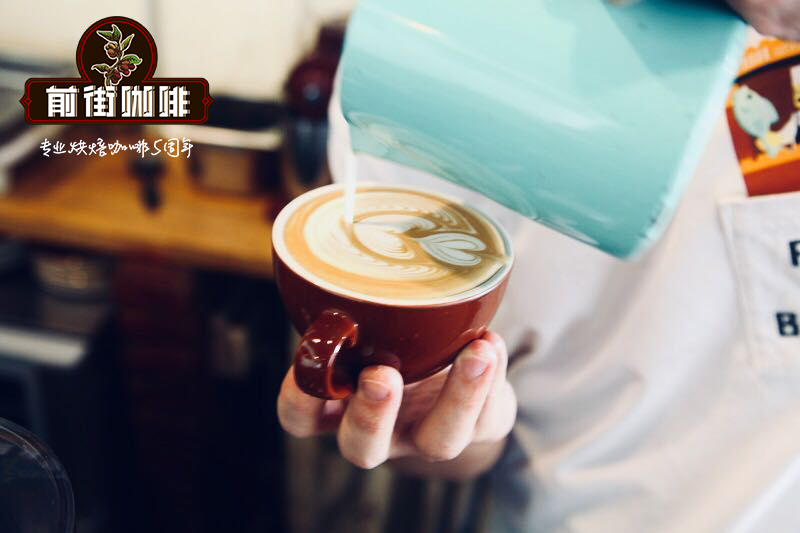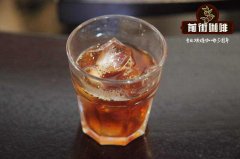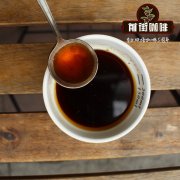What are the coffee brands worth buying in Indonesia? Sulawi, Indonesia [West Tanatolaya producing area]

Professional coffee knowledge exchange more coffee bean information please follow the coffee workshop (Wechat official account cafe_style)
What are the coffee brands worth buying in Indonesia? Sulawi, Indonesia [West Tanatolaya] what is the flavor of AA washed beans?
Indonesia straddles both sides of the equator, the hot and humid rainforest climate is rich in rainfall, and the fertile volcanic soil brings rich nutrients to coffee. Indonesia is a republic made up of more than 10,000 small islands, but the main producing area of coffee is limited to Java, Sumatra and Sulawesi. Ran Robustca originates from 90% of its coffee production. The small amount of Arabica native coffee beans produced in Java is a kind of sour coffee beans with small particles. The original species of Arabica on this island was once a world-class product, but in 1922, due to large-scale diseases and insect pests, it was changed to the original species of Robusta, which is resistant to diseases and insect pests. up to now, the original species of Robusta coffee beans it produces is second to none in the world, with personalized bitterness. "Robusta" is widely used for mixed use. Mantenin, produced in Sumatra, is one of the few Arabica species with large particles, but poor production management and roasting will immediately reflect on the coffee beans, so they will be criticized, but because of the rich and mellow, syrup-like taste from Toyo, it was regarded as the best before the end of the Blue Mountain, and many people still like it and can't put it down. Ankara is a kind of coffee beans with small grains and a little round, which represents the coffee of Indonesia.
Sulawesi's big Carosi, and some of the smaller "Randy Bao" are less famous. Sulawesi of Sulawesi, formerly known as Celebes, is one of the oldest islands in the Indonesian archipelago. Sulawesi, Java and Sumatra all belong to volcanic topography. The most famous coffee producing areas are in the Tana Toraja highlands, located in the mountains of South Sulawesi. The coffee forest region is 1300,000m above sea level, with plenty of sunshine and a large temperature difference between day and night. The normal temperature is maintained at 24 ℃-25 ℃. Coupled with the rich nutrients of the volcanic soil in the fertile tropical highlands, it is the height most suitable for the growth of Indonesia's high-quality Arabica bean coffee forest.
Coffee beans from the Toraja highlands of Sulawesi, Indonesia, are another generation of high-quality coffee. With a small annual output and the elegant characteristics of high mountain beans, they are famous for their full consistency and rich flavor. They are often the favorite choice of the Indonesian royal family and European royal aristocracy, and a delicate choice of Asian beans.
Sulawesi (Siribes) was deeply influenced by Dutch rule from 1605 to World War II; the Dutch East India Company controlled the trade of Sulawesi in 1669; in the mid-1600s, the Dutch built Fort Rotterdam in Urong Pandang (now known as Wangkassi), and it was not until 1905 that the whole island was completely conquered and included in Dutch East India In the 1700s, the East India Company controlled all coffee production in Indonesia and introduced Arabica coffee (Tibica seed) to Sulawesi in 1750. It takes a while from Minneapolis to Tanatolaya in Sulawesi, Minneapolis-Tokyo-Singapore-Jakarta-Wangkasek, and then an eight-hour drive north to Rantepao in Tanatolaya, which is simply the most beautiful place in the world, full of green, rice paddies and a tranquil atmosphere. Traditional high-footed boat houses (Tongkonan Houses) can be seen everywhere, the houses are engraved with special Toraya patterns as decoration.
Most of the coffee in Tanatolaya is S795, which is a Tibica hybrid, which once again proves how deeply the variety affects the flavor of coffee; there are a lot of East Timorese species in Indonesia, which is a cross between Robusta and Arabica, but Tanatolaya succeeded in retaining a higher quality coffee variety. In 2010, Sulawesi received twice as much rainfall as in previous years, reducing the 2011 harvest by 70%, and it was almost impossible to buy Sulawesi coffee during the harvest season.
Indonesian coffee has traditionally been treated with raw beans by wet grinding (Giling-Basah), or wet plucking, as in Sumatra; Toya, a Japanese-Indonesian joint venture, introduced the traditional Central American washing method to Sulawesi in 1976. Pedamaran Farm, owned by Toako, is located at 900m above sea level. It buys raw beans (humidity is about 40 per cent) from small coffee farmers, who usually grow coffee at 1,200m above sea level. After the beans are quickly sent to Pedamaran farm, they are placed in an elevated bed to dry at the farm's processing plant. If coffee farmers want to sell their raw beans to Toako, they must provide proof of raw bean grade, including details of selective harvesting, storage, transportation, humidity, etc.; coffee farmers need to apply for coffee identity cards to sell coffee on weekly market days in the Tanatolaya area. This batch of coffee is planted at a higher altitude.
Flavor: soft acidity, smooth and mellow, with fruit, cream and woody grass aromas, finish with spice sweetness, fineness and depth. It has a long finish.
Qianjie recommended cooking:
Filter cup: KONO filter cup
Water temperature: 88 degrees
Degree of grinding: small Fuji degree of grinding 4
Cooking method: the ratio of water to flour is 1:14, 17g powder, 25g water for the first time, steaming for 30s, and 238g water for the second time. The extraction time is about 2:30 seconds.
Analysis: there are not many ribs at the bottom of the Kono cup, and the filter paper clings to the filter cup to achieve the purpose of limiting air flow, which can make water and coffee powder have longer contact soaking time in the filter cup and ensure the extraction time and extraction rate of rough grinding. In this way, the coffee powder can be fully extracted, enhance the mellow taste and make the taste more concentrated.
Important Notice :
前街咖啡 FrontStreet Coffee has moved to new addredd:
FrontStreet Coffee Address: 315,Donghua East Road,GuangZhou
Tel:020 38364473
- Prev

One of the best coffee brands in Indonesia | how about coffee in Indonesia [Sulawesi Toraja Coffee]
Professional coffee knowledge exchange more coffee bean information please follow the coffee workshop (Wechat official account cafe_style) one of the best coffee brands in Indonesia. How about Indonesian [Sulawesi Toraja Coffee] coffee? How to cook it? On the island of Sulawesi under Indonesia's jurisdiction, the equatorial line crosses the northern peninsula and covers an area of 170,000 square kilometers, about the size of five Taiwan.
- Next

What is the flavor and taste of 90+Techembe Clinique coffee? What is the system for grading 90 + coffee? What is it?
Professional coffee knowledge exchange more coffee bean information please follow the coffee workshop (Wechat official account cafe_style) 90 + Techembe Clinique coffee flavor and taste? What is the system for grading 90 + coffee? Is there any unique way to deal with it? 90 + boutique coffee Techembe Clinique comes from Tchembe named after the variety Bolo of Haricho and Amaro Mountain.
Related
- Detailed explanation of Jadeite planting Land in Panamanian Jadeite Manor introduction to the grading system of Jadeite competitive bidding, Red bid, Green bid and Rose Summer
- Story of Coffee planting in Brenka region of Costa Rica Stonehenge Manor anaerobic heavy honey treatment of flavor mouth
- What's on the barrel of Blue Mountain Coffee beans?
- Can American coffee also pull flowers? How to use hot American style to pull out a good-looking pattern?
- Can you make a cold extract with coffee beans? What is the right proportion for cold-extracted coffee formula?
- Indonesian PWN Gold Mandrine Coffee Origin Features Flavor How to Chong? Mandolin coffee is American.
- A brief introduction to the flavor characteristics of Brazilian yellow bourbon coffee beans
- What is the effect of different water quality on the flavor of cold-extracted coffee? What kind of water is best for brewing coffee?
- Why do you think of Rose Summer whenever you mention Panamanian coffee?
- Introduction to the characteristics of authentic blue mountain coffee bean producing areas? What is the CIB Coffee Authority in Jamaica?

